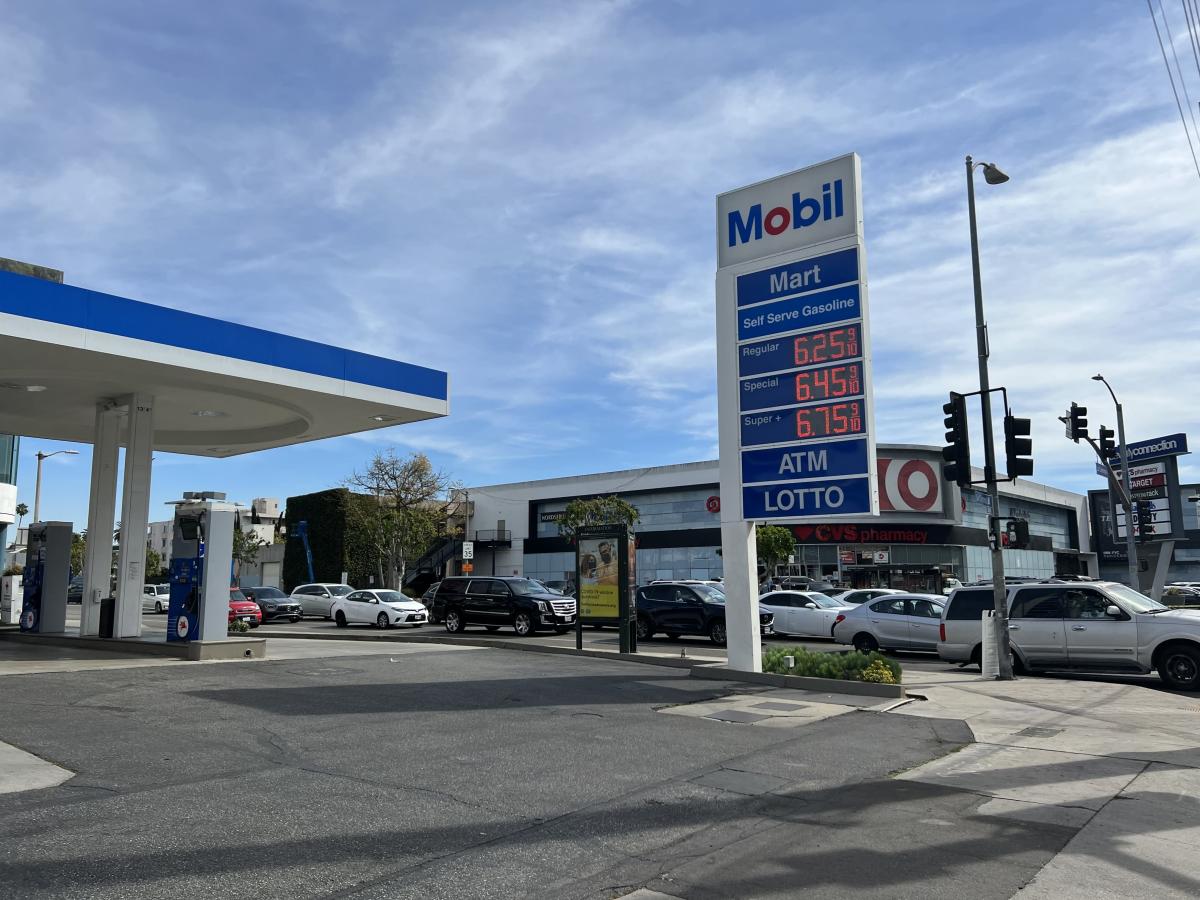
Even before Russia’s invasion of Ukraine, U.S.gas prices were rising rapidly — and are now marching toward a national average of $4 per gallon or higher in the coming months with the crisis showing no signs of abating.
As sanctions isolate Moscow and crimp Russian energy supplies, skyrocketing crude oil and gas prices will impact consumers and businesses already facing the highest inflation levels since 1982.On Thursday, Brent ( CL=F ) briefly flirted with $120 per barrel, with U.S.oil ( MCL=F ) not far behind at $116.
“I wish that we’ve peaked.I think we’re a long way from that.Unfortunately, on an average year, gas prices go up 25 to as much as 75 cents a gallon between March and Memorial day,” Patrick De Haan, head of petroleum analysis at GasBuddy, told Yahoo Finance Live this week.
On Monday, the national average was $3.61 a gallon, according to AAA .By comparison, the average U.S.gas price was about $2.65 a year ago.
In California, where prices are now averaging $4.82 a gallon — up 5 cents from last week — the situation is already grim.
A year ago, the Golden State’s average pump price was about $1.16 cheaper.
Los Angeles and several other areas across the Southland follow the trend of topping record high averages.The average price for regular gas has now hit $4.89 a gallon in the Los Angeles area.That’s the 22nd record high in the last 25 days.It’s also 10 cents more than last week and about $1.14 more than a year ago.
‘Blown away’
At one Chevron gas station in Los Angeles county, customers are paying $6.25 per gallon over the weekend, causing them to dig deeper into their pockets at the pump.
“I am just blown away like I couldn’t imagine we would get this high so quickly.It’s just really surprising,” Janine Pibal, a Los Angeles County resident, told Yahoo Finance in an interview.
However, a defining characteristic of the current inflationary environment is consumers that complain, but ultimately pay for goods and services that have reset at higher levels.As a result, some California drivers are resigned to the surge in gas, if only because of personal or professional driving needs.
“My car pays my bills because if not I can’t get to my work so it’s kind of the cost of doing business,” Alejandro Vazquez, a Los Angeles County resident, told Yahoo.
While gas is becoming expensive around the country, it’s considerably more so in California, given a combination of taxes and fees that make fuel costs among the highest in the nation.The state levies a 51.1 cent tax on each gallon of gas, second only to Pennsylvania’s 58.7 tax per gallon.
But California’s driving-heavy culture, and the demand it creates, separates it from most other states — along with other factors.
“The entire west coast generally is much at a premium compared to much of the rest of the country.You’re relatively isolated refineries in the West Coast [and] there’s not as many of them when there are issues,” Gas Buddy’s De Haan said.
At the same time, the Golden state has a Cap-and-Trade Program that requires big greenhouse gas emitters like oil and gas refineries to offset emissions by purchasing carbon credits.
California’s Air Resources Board also requires gas stations to only sell specific blends of gasoline formulated to minimize pollution.
That blend is more expensive to produce, adding another cost that gets passed down to drivers.
“There’s a lot of fragmentation between types of summer gasoline that all just pinch prices even more.[A] good reminder for what’s coming is the transition of rising demand as Americans get back outside and of course, refinery maintenance season,” De Haan said.
Late last year, President Joe Biden announced that the Department of energy would release 50 million barrels of oil from the country’s Strategic Petroleum Reserve “to lower prices for Americans and address the mismatch between demand exiting the pandemic and supply” — but to little effect at the pump.This week, the International Energy Agency announced a similar move , which also failed to lower spot energy prices.
Lawmakers are urging the White House to stabilize gas prices by releasing SPR stocks once again, but geopolitical realities are likely to complicate matters.
“You need a nuclear deal with Iran, to ease the sanctions on Iran.Then the 2 million barrels that they produce can make it back to the global market,” De Haan suggested.
The White House has been working toward a deal, but De Haan said “you’re going to need Saudi Arabia and potentially help from the UAE on increasing production.” Still, none of that is likely to fully offset Russia’s 10 million barrels per day, especially with Western governments edging toward sanctioning the country’s energy sector.
It still could get “more messy” in terms of higher oil prices, De Haan noted.
Dani Romero is a reporter for Yahoo Finance.
Follow her on Twitter: @daniromerotv
Read the latest financial and business news from Yahoo Finance
Follow Yahoo Finance on YouTube ,
[Twitter] ,
[Instagram] ,
[Facebook] ,
[Flipboard] , and
[LinkedIn].
